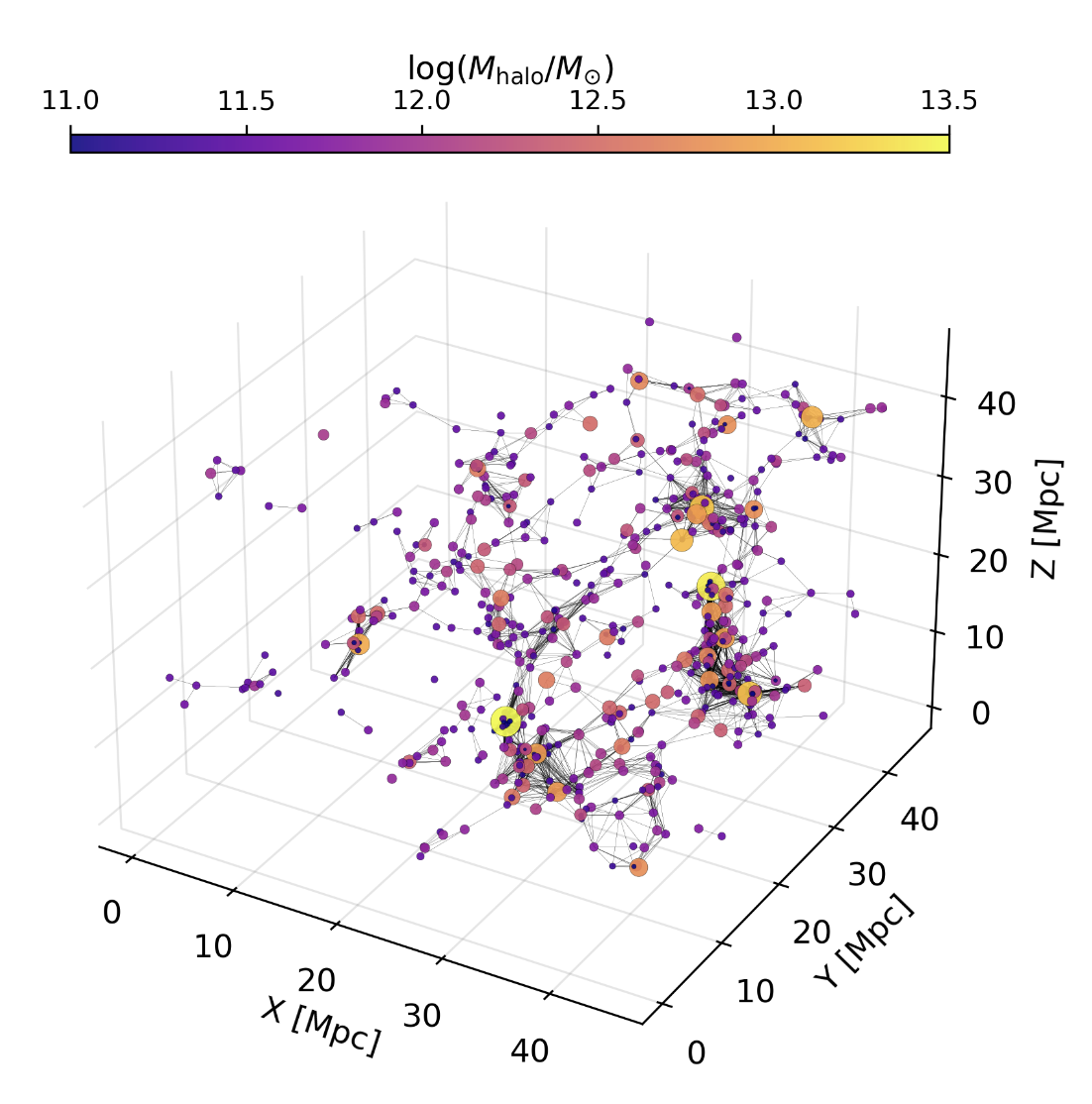PI: John F. Wu (email, website)
Group Website: ISM*@ST
Project Duration: 6 month rotation project
Background and Context
Galaxies grow and evolve in dark matter halos amidst a complex, large-scale environment. These galaxies (or dark matter subhalos) can be represented as nodes on a graph, and their relationships or effective interactions can be represented as edges on a graph. By train graph neural networks (GNNs), we can learn the physical relationships between galaxies, subhalos, and their surroundings directly from large data sets, such as hydrodynamic simulations (see Figure 1 below; Wu & Jespersen 2023). This has implications for modeling the galaxy-halo connection (e.g., Wechsler & Tinker 2018) and large-scale correlations of galaxy properties (e.g., Hearin et al. 2016).
Figure 1. A cosmic graph showing galaxies/subhalos from the Illustris TNG300 simulation. From Wu & Jespersen (2023).
There are still many open questions about how to improve the use of GNNs to model cosmic structures. One promising avenue is to include the morphological information of galaxies while trying to learn the galaxy-halo-environment connection, since galaxy mergers and evolutionary processes leave imprints on galaxy appearances. There are several ways to quantify galaxy morphology, and in this project, we will compare a baseline GNN against GNN models augmented with morphological information.
Student work
Planned work as part of project:
- Download and preprocess large hydrodynamic simulation data (i.e. TNG300, TNG300-Dark).
- Implement and train a GNN to estimate dark matter halo masses from baryonic properties (starter code is available).
- Augment GNN using added information from galaxy morphology classifications.
- (bonus) Augment GNN using convolutional neural network (CNN)-extracted morphological features from synthetic galaxy images.
- Write and publish a short paper detailing findings.

